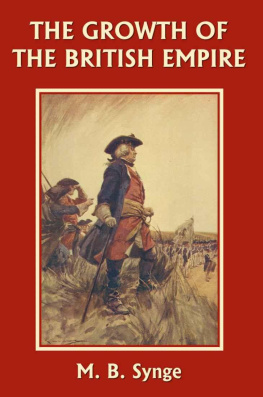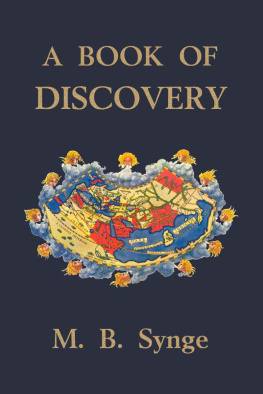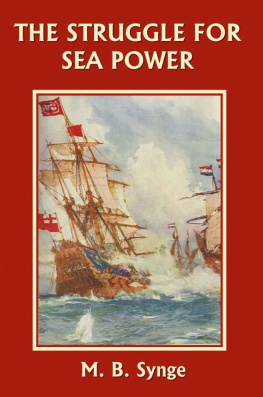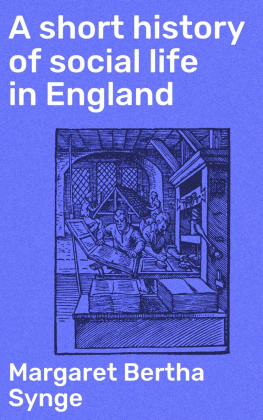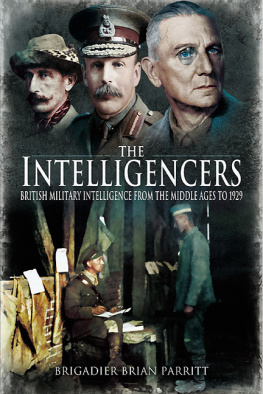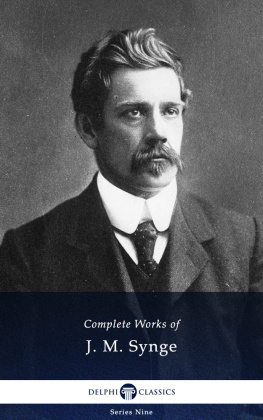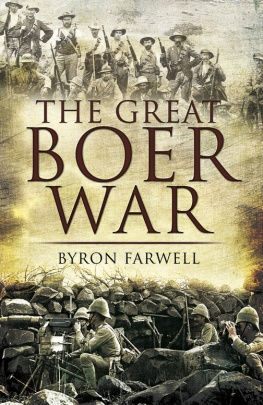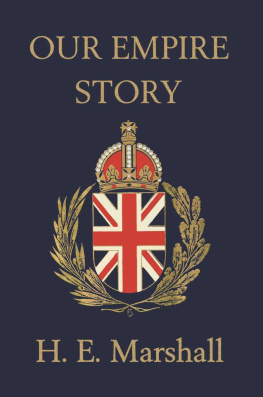Growth of the British Empire
by
M. B. Synge
Yesterday's Classics
Chapel Hill, North Carolina
Cover and Arrangement 2010 Yesterday's Classics, LLC
All rights reserved. No part of this book may be reproduced or retransmitted in any form or by any means without the written permission of the publisher.
This edition, first published in 2010 by Yesterday's Classics, an imprint of Yesterday's Classics, LLC, is an unabridged republication of the work originally published by William Blackwood and Sons in 1904. This title is available in a print edition (ISBN 978-1-59915-017-8).
Yesterday's Classics, LLC
PO Box 3418
Chapel Hill, NC 27515
Yesterday's Classics
Yesterday's Classics republishes classic books for children from the golden age of children's literature, the era from 1880 to 1920. Many of our titles are offered in high-quality paperback editions, with text cast in modern easy-to-read type for today's readers. The illustrations from the original volumes are included except in those few cases where the quality of the original images is too low to make their reproduction feasible. Unless specified otherwise, color illustrations in the original volumes are rendered in black and white in our print editions.
Contents
CHAPTER I
How Spain Lost South America
"So grew and gathered through the silent years
The madness of a people, wrong by wrong."
L OWELL.
T HE storms of war had passed away and Europe was at peace. But, like the waves after a great storm, the influences that had worked for freedom, continued to work. For two centuries, this sixth part of the world, had been governed by Spaniards and Portuguese: for two centuries, she had borne the oppression of despotic viceroys sent from Spain, whose cruelties defy description. It was small wonder then that, with the spirit of revolution in the air, the people of South America should rise and fight to free themselves from Spain.
Brazil belonged to Portugal, and the hatred of the people towards the Portuguese, not being so bitter, the country worked out its freedom by more peaceful means. The Spanish colonies rose after the deposition of their king by Napoleon.
It is impossible to follow the many battles that took place during the next twelve years: let us rather tell the story of two heroes, whose names stand out clearly against the horizon of South American history, as the liberators of their countryBolivar and San Martin.
The earliest plans for the revolution, that was to free South America from the yoke of Spain, were laid by a secret society in London, founded by Miranda. England herself took no part; but Bolivar and San Martin both caught the enthusiasm of the master, and swore to do all in their power to carry out Miranda's ideas. Both men sailed for South America.
San Martin landed at Buenos Ayres in the year 1812an unknown man. He at once roused the people of Argentina, a country ten times the size of Great Britain and Ireland, called from the great silver riverLa Plata, which flowed through it. It is one of the richest territories in the world to-day, and largely populated by European emigrants. San Martin, who had served in Spanish armies for twenty years, soon fired the enthusiasm of the people. An army was raised, which soon became famous under his leadership. It was not long before the arms of Spain were torn down, to be replaced by the blue and white colours of the revolutionists, the cruel tortures of the Spanish Inquisition were abolished, and the last links with the mother country broken. Early in the year 1816the year after WaterlooArgentina declared her independence.
The spirit of revolution had meanwhile spread to the neighbouring province of Chili, a strip of country between the high Andes and the Pacific Ocean, so called from the Peruvian word for snow. But the Spaniards were strong in Peru, and marching south, they defeated the Chilians, under the leadership of the famous Irishman O'Higgins. He now looked to San Martin for help. But the mighty range of the Andes, rising between the two provinces, was considered quite impassable. Nevertheless San Martin determined to march to the aid of Chili. And the march of the army of the Andes is one of the most brilliant feats ever recorded in the world's military history. It is a feat that ranks with Hannibal's famous passage over the snowy Alps and Napoleon's march to Marengo.
Having set themselves free, this army of patriots was ready to face the colossal task, of helping their brothers across the Andes to free themselves. Everything was prepared at Mendoza, at the western feet of the mountains. Here an arsenal was established, where cannon, shot, and shell were cast, church bells were melted down, and forges blazed by day and night. The patriotic women of Mendoza made blue cloth for the uniforms, and early in January 1817, all was ready for the start. There was high holiday in the town; the streets were decked with flags, and the army marched forth to receive its flag, embroidered by the women of the city.
"Soldiers!" cried San Martin, waving the flag above his head, "this is the first independent flag, which has been blessed in America. Swear to sustain it and to die in defence of itas I swear I do."
"We swear!" rose from four thousand throats.
Off started the army under the guidance of San Martin and O'Higgins. It would take too long to tell of the bitter days and nights, endured by these brave soldiers of Argentina, as they struggled over the snow-clad passes. Ridge after ridge rose before them, terrible with ice and snow, treacherous with chasms and precipices. Mules, horses, and men dropped dead in the icy winds, that swept down from the lofty summits. But their noble efforts were crowned with success. Three weeks from the start, the army of the Andes descended on the plains of Chili, surprised and defeated the Spanish army, and marched triumphantly into Santiago, the capital. Chilian independence was won, and O'Higgins was made the first governor of the new republic.
Much had been done. Spanish rule had been checked, but not yet broken. Its grip was still on Peru, and her people were crying aloud for freedom, like their neighbours. The way to Peru from Chili lay by sea, and the Spanish fleet lay off Callao, the port of Lima. It was at this moment, that the famous British sailor Lord Cochrane came upon the scene. One November day in 1818, he landed at Valparaiso, the port of Chili, ready to place his services at the disposal of the revolutionists.
Though broken on land, the Spanish shore was not conquered. Peru still lay in the hands of the oppressor, and the Spanish fleet in its harbours was ready to sail south to attack the Chilians, when Lord Cochrane, trained in the school of Nelson, appeared on the scene. He was given command of the Chilian fleet, and soon swept the Spaniards from the sea.
Having thus made Chili mistress of her own waters, it was possible to begin the liberation of Peru.
CHAPTER II
The Heroes of Independence
"The time is ripe, is rotten-ripe, for change,
Then let it come."
L OWELL.
W HILE San Martin, O'Higgins, and Cochrane were working to free the southern provinces of South America from the yoke of Spain, Bolivar was at work with the master-spirit, Miranda, in the north.
When little more than a boy, young Bolivar had stood with his tutor amid the ruins of Romethe city of the Csars. In a moment of enthusiasm, he had seized his tutor's hands and sworn to liberate his native land. Did the dream of his life also come to him here,that of ruling over a united South American republic? He went to London, became an enthusiastic disciple of Miranda, renewed the oath made on the sacred hill of Rome, and returned to South America with Miranda to fulfil his promise.

